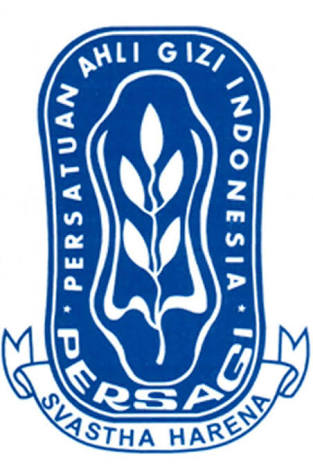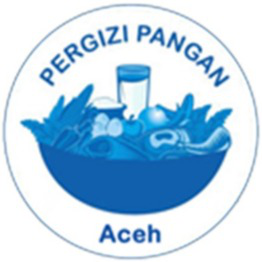Sensory Properties of Dadih Jelly Candy with The Addition of Clitoria Ternatea Flower Extract
Abstract
Full Text:
PDFReferences
Adesokan, I. A., Odetoyinbo, B. B., Ekanola, Y. A., Avanrenren, R. E., & Fakorede, S. (2011). Production of Nigerian nono using lactic starter cultures. Pakistan Journal of Nutrition, 10(3), 203–207. https://doi.org/10.3923/pjn.2011.203.207
Burey, P., Bhandari, B. R., Rutgers, R. P. G., Halley, P. J., & Torley, P. J. (2009). Confectionery gels: A review on formulation, rheological and structural aspects. International Journal of Food Properties, 12(1), 176–210. https://doi.org/10.1080/10942910802223404
Chayaratanasin, P., Caobi, A., Suparpprom, C., Saenset, S., Pasukamonset, P., Suanpairintr, N., Barbieri, M. A., & Adisakwattana, S. (2019). Clitoria ternatea flower petal extract inhibits adipogenesis and lipid accumulation in 3T3-L1 preadipocytes by downregulating adipogenic gene expression. Molecules, 24(10). https://doi.org/10.3390/molecules24101894
Chusak, C., Ying, J. A. Y., Zhien, J. L., Pasukamonset, P., Henry, C. J., Ngamukote, S., & Adisakwattana, S. (2019). Impact of Clitoria ternatea (butterfly pea) flower on in vitro starch digestibility, texture and sensory attributes of cooked rice using domestic cooking methods. Food Chemistry, 295, 646–652.
https://doi.org/10.1016/j.foodchem.2019.05.157
de Avelar, M. H. M., & Efraim, P. (2020). Alginate/pectin cold-set gelation as a potential sustainable method for jelly candy production. LWT, 123, 109119. https://doi.org/10.1016/j.lwt.2020.109119
Ezzudin, M. R., & Rabeta, M. S. (2018). A potential of telang tree (Clitoria ternatea) in human health. Food Research, 2(5), 415–420. https://doi.org/10.26656/fr.2017.2(5).073
Hani, N. M., Romli, S. R., & Ahmad, M. (2015). Influences of red pitaya fruit puree and gelling agents on the physico-mechanical properties and quality changes of gummy confections. International Journal of Food Science and Technology, 50(2), 331–339. https://doi.org/10.1111/ijfs.12638
Lawless, H. T., & Heymann, H. (2010). Sensory evaluation of food (2nd ed.). Springer.
Lungade, P., Karadbhajne, S. V, & Mande, V. (2022). A review of sugar-based confectionery: properties and types of products. International Journal of Food and Nutritional Sciences, 11(3), 3275–3287.
Maina, J. W. (2018). Analysis of the factors that determine food acceptability. The Pharma Innovation Journal, 7(5), 253–257.
Melia, S., Purwati, E., Yuherman, Jaswandi, Aritonang, S. N., & Silaen, M. (2017). Characterization of the antimicrobial activity of lactic acid bacteria isolated from buffalo milk in west sumatera (Indonesia) against listeria monocytogenes. Pakistan Journal of Nutrition, 16(8), 645–650. https://doi.org/10.3923/pjn.2017.645.650
Mir, N. A., Riar, C. S., & Singh, S. (2023). Effect of film forming solution pH on antibacterial, antioxidant and structural characteristics of edible films from modified quinoa protein. Food Hydrocolloids, 135. https://doi.org/10.1016/j.foodhyd.2022.108190
Mutlu, C., Tontul, S. A., & Erbaş, M. (2018). Production of a minimally processed jelly candy for children using honey instead of sugar. LWT, 93, 499–505. https://doi.org/10.1016/j.lwt.2018.03.064
Netravati, Gomez, S., Pathrose, B., N, M. R., P, M. J., & Kuruvila, B. (2022). Comparative evaluation of anthocyanin pigment yield and its attributes from Butterfly pea (Clitorea ternatea L.) flowers as prospective food colorant using different extraction methods. Future Foods, 6, 100199. https://doi.org/10.1016/j.fufo.2022.100199
Nisha, P., Singhal, R. S., & Pandit, A. B. (2011). Kinetic modelling of colour degradation in tomato puree (Lycopersicon esculentum L.). Food and Bioprocess Technology, 4(5), 781–787. https://doi.org/10.1007/s11947-009-0300-1
Putri, M. T., Juliyarsi, I., Roza, E., & Purwati, E. (2021). Proximate analysis of Dadih from Kapau, Agam Regency, West Sumatera, Indonesia. IOP Conf. Ser.: Earth Environ. Sci, 888(1). https://doi.org/10.1088/1755-1315/888/1/012044
Renaldi, G., Junsara, K., Jannu, T., Sirinupong, N., & Samakradhamrongthai, R. S. (2022). Physicochemical, textural, and sensory qualities of pectin/gelatin gummy jelly incorporated with Garcinia atroviridis and its consumer acceptability. International Journal of Gastronomy and Food Science, 28, 100505. https://doi.org/10.1016/j.ijgfs.2022.100505
Samakradhamrongthai, R. S., & Jannu, T. (2021). Effect of stevia, xylitol, and corn syrup in the development of velvet tamarind (Dialium indum L.) chewy candy. Food Chemistry, 352, 129353. https://doi.org/10.1016/j.foodchem.2021.129353
Silva, L. B. da, Queiroz, M. B., Fadini, A. L., Fonseca, R. C. C. da, Germer, S. P. M., & Efraim, P. (2016). Chewy candy as a model system to study the influence of polyols and fruit pulp (açai) on texture and sensorial properties. LWT, 65, 268–274. https://doi.org/10.1016/j.lwt.2015.08.006
Sisriyenni, D., & Zurriyati, Y. (2004). Kajian kualitas dadih susu kerbau d dalam tabung bambu dan tabung plastik. Jurnal Pengkajian Dan Pengembangan Teknologi Pertanian, 7(2), 171–179.
Suebkhampet, A., & Sotthibandhu, P. (2012). Effect of using aqueous crude extract from butterfly pea flowers (clitoria ternatea l.) As a dye on animal blood smear staining. Suranaree J. Sci. Technol, 19(1), 15–19.
Tamer, C. E., İncedayı, B., Çopur, O. U., & Karınca, M. (2013). A research on the fortification applications for jelly confectionery. Journal of Food, Agriculture & Environment, 11(2), 152-157. https://doi.org/10.1234/4.2013.4226
Usmiati, S., & Risfaheri. (2013). Pengembangan dadih sebagai pangan fungsional probiotik asli sumatera barat. J. Litbang Pert, 32(1), 421797.
White, J. S. (2008). Straight talk about high-fructose corn syrup: What it is and what it ain’t. American Journal of Clinical Nutrition, 88(6). https://doi.org/10.3945/ajcn.2008.25825B
DOI: https://doi.org/10.35308/jns.v4i1.7490
Refbacks
- There are currently no refbacks.
Managed by Department of Nutrition, Faculty of Public Health
Published by Universitas Teuku Umar ,
Website: http://jurnal.utu.ac.id/JNS/index
Email: jns@utu.ac.id
Phone/Fax: +62-852-7736-5563; E-mail:
This work is licensed under a Creative Commons Attribution-ShareAlike 4.0 International License.














